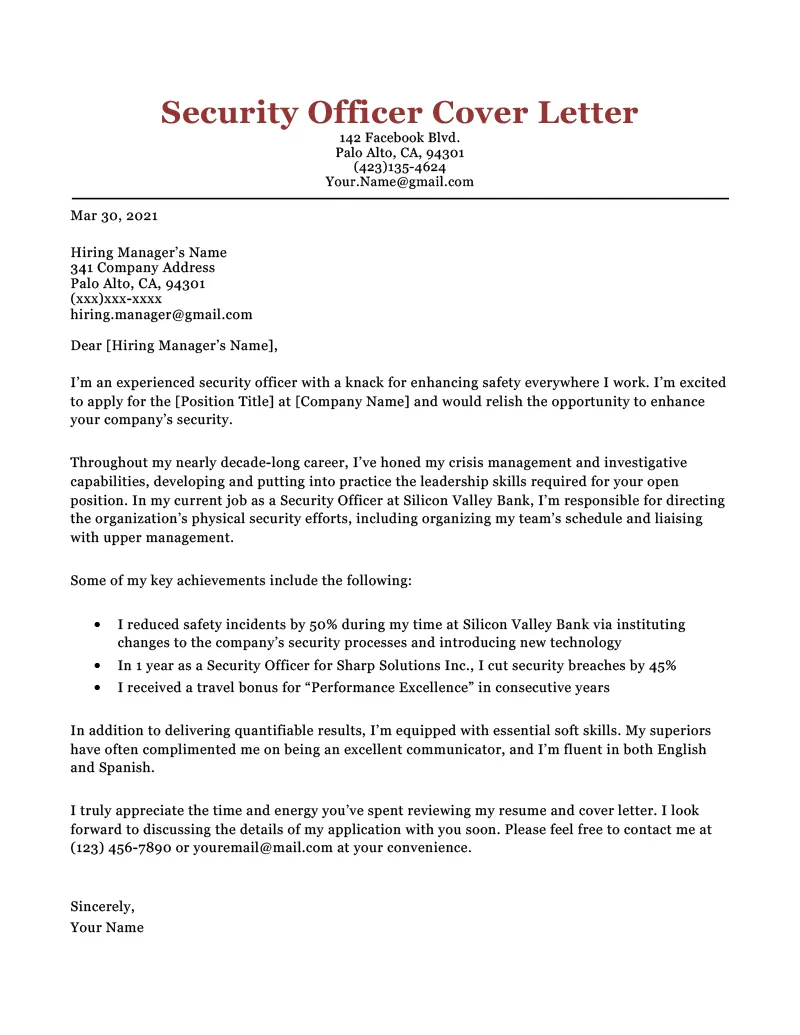Crafting a Compelling Security Cover Letter
A well-crafted security cover letter is your first impression on a potential employer. It’s your chance to showcase your relevant skills, experience, and personality, setting you apart from other candidates. A strong cover letter complements your resume by providing a narrative that highlights your suitability for the specific security role. It’s an opportunity to demonstrate your understanding of the job requirements and express your enthusiasm for the position. A poorly written cover letter can easily lead to your application being overlooked. Therefore, taking the time to craft a compelling letter is a crucial step in the job application process, increasing your chances of securing an interview. Remember that tailoring your cover letter to each specific job application is essential.
Understanding the Purpose of a Security Cover Letter
The primary purpose of a security cover letter is to introduce yourself to the hiring manager and express your interest in the security position. It’s more than just a formality; it’s a tool to demonstrate how your skills and experience align with the job requirements. A successful cover letter should highlight your understanding of the security industry, your commitment to safety, and your ability to fulfill the responsibilities outlined in the job description. This document allows you to provide context to your resume, explaining why you are a good fit for the specific role and the organization. It’s also an excellent platform to showcase your communication skills, which are vital in the security field.
Highlighting Relevant Skills and Experience
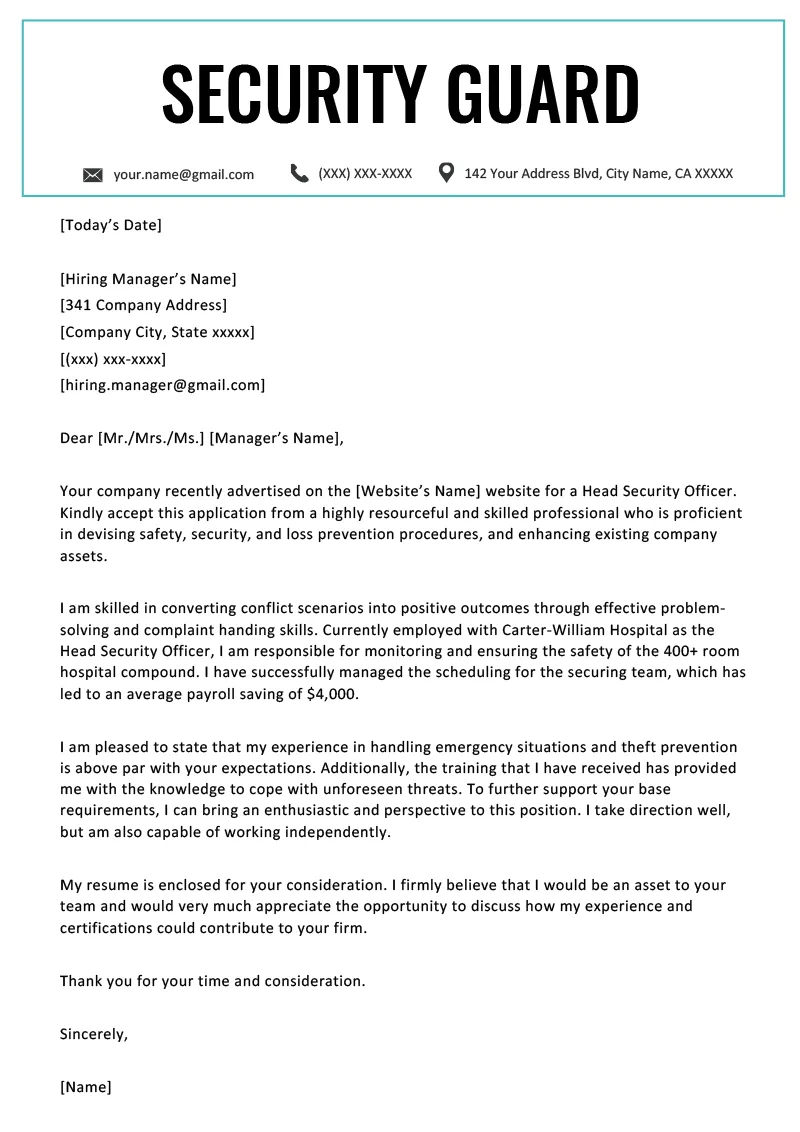
When writing a security cover letter, the emphasis should be on your relevant skills and experience. Focus on the qualities and abilities that make you a strong candidate for the specific role. This could include experience in surveillance, access control, incident reporting, or emergency response. Review the job description carefully and identify the key skills the employer is seeking. Then, provide specific examples from your past roles where you demonstrated those skills. Use action verbs to describe your accomplishments and quantify your achievements whenever possible. For instance, instead of saying ‘Managed security operations,’ you might say ‘Managed security operations for a team of 10, resulting in a 15% reduction in incidents.
Security Experience Demonstrating your capabilities
Detailing your security experience is essential. This is where you showcase your hands-on expertise and the different environments you have worked in. For example, experience in corporate security, residential security, or event security shows versatility. Mention any specialized training you have received, such as certifications in security management, first aid, or self-defense. Briefly describe your roles and responsibilities, highlighting the types of security systems you have used, the protocols you followed, and the incidents you handled. Provide concrete examples to illustrate your ability to assess situations, make critical decisions, and respond effectively to threats. The goal is to convince the employer that you have the practical experience required to perform the job successfully.
Key Skills to Feature in Your Security Cover Letter
Highlighting the right skills is important to catch the eye of a hiring manager. In the security field, certain skills are consistently in high demand. Focus on both technical and soft skills to present a well-rounded profile. Include any experience you have with security systems, such as alarm systems, CCTV, and access control systems. Emphasize your abilities in observation, risk assessment, and conflict resolution. Also, don’t overlook the importance of teamwork, as security often involves collaborating with others. Adaptability and the ability to stay calm under pressure are also important. By incorporating these essential skills into your cover letter, you will increase your chances of standing out.
Communication and Interpersonal Skills
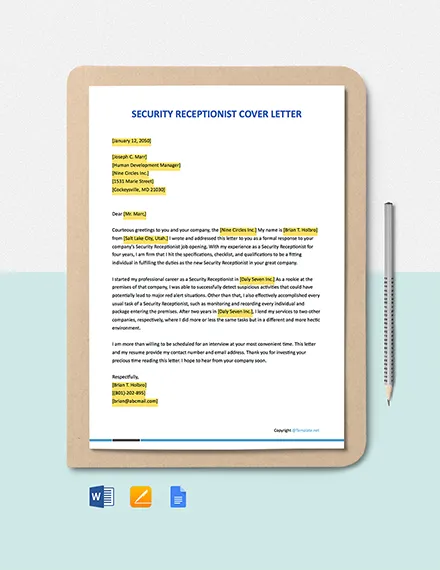
Excellent communication and interpersonal skills are crucial in security. Security personnel often interact with a wide range of people, from colleagues and supervisors to the public and potential suspects. Your cover letter should highlight your ability to communicate effectively, both verbally and in writing. Provide examples of how you have successfully communicated with others in the past, such as in incident reports or when interacting with the public. Also, emphasize your ability to build rapport, de-escalate situations, and work collaboratively with others. Employers seek candidates who can remain professional and composed, even under pressure. Demonstrate your ability to maintain composure and professionalism is essential.
Technical and Surveillance Skills
Technical and surveillance skills are highly valued in the security industry. Many security roles involve monitoring surveillance systems, operating security equipment, and utilizing various technologies. In your cover letter, detail your experience with CCTV systems, alarm systems, access control systems, and any other relevant technologies. Mention any training or certifications you have received in these areas. If you have experience with surveillance techniques, such as observation and evidence gathering, be sure to highlight it. Demonstrate your understanding of security protocols and your ability to follow procedures precisely. Any experience you have with computer systems and software applications will also be an asset.
Detailing Your Relevant Experience
When detailing your experience, provide specific examples that align with the job description. Instead of simply listing your job titles, describe your responsibilities and accomplishments in each role. Provide context to your experiences by explaining the environment in which you worked and the type of security operations you were involved in. For each previous position, explain the types of incidents you handled, the security protocols you followed, and the security systems you used. This will help the hiring manager understand the depth and breadth of your experience. The more details and context you include, the better your cover letter will reflect your capabilities and how you would fit into their team.
Previous Security Roles and Responsibilities
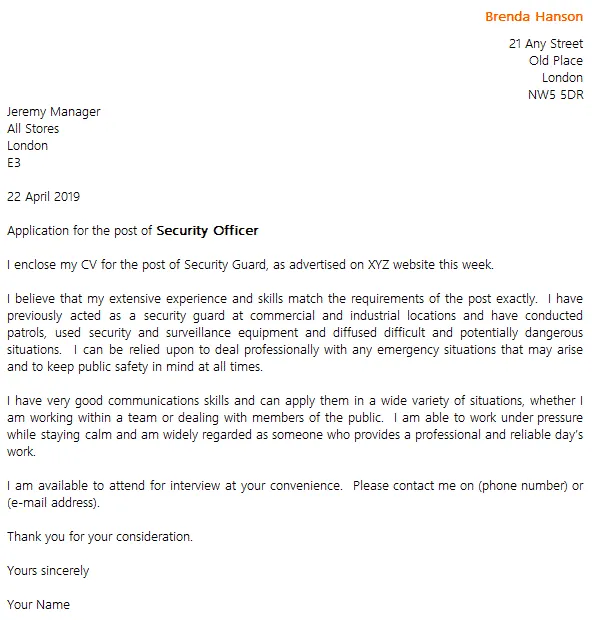
Outline your previous security roles and describe your responsibilities. List your previous positions in reverse chronological order, starting with your most recent job. For each position, provide the job title, the name of the company, and the dates of employment. Then, describe your primary responsibilities. Include duties such as patrolling premises, monitoring surveillance systems, controlling access, responding to incidents, and writing reports. Use action verbs to describe your duties and responsibilities, such as ‘monitored,’ ‘patrolled,’ ‘responded,’ and ‘reported.’ Your descriptions should be concise yet informative, giving the reader a clear understanding of your experience in each role.
Quantifying Achievements and Results
Quantifying your achievements demonstrates the tangible impact of your work. Whenever possible, use numbers and data to illustrate your accomplishments. For example, instead of saying ‘Improved security,’ say ‘Improved security by implementing new patrol procedures, resulting in a 20% decrease in theft incidents.’ Or if you have managed a team, mention how many people were on your team. Highlight any awards, promotions, or positive feedback you have received. This information adds credibility and demonstrates your value to potential employers. Quantification can make your cover letter more compelling and demonstrate that you are a result-oriented security professional. This clearly shows your capabilities and how you can add value to their security team.
Structuring Your Security Cover Letter for Success
A well-structured cover letter is easy to read and makes a positive impression. Divide your letter into distinct sections, using clear headings and concise paragraphs. The structure should guide the reader through your key qualifications and experience. It will help to emphasize the most important points. The structure should include an introduction, body paragraphs, and a conclusion. Keep the tone of the letter professional and enthusiastic. Using a logical flow and clear organization can significantly increase the impact of your cover letter, making it more memorable and effective.
Formatting and Layout Tips
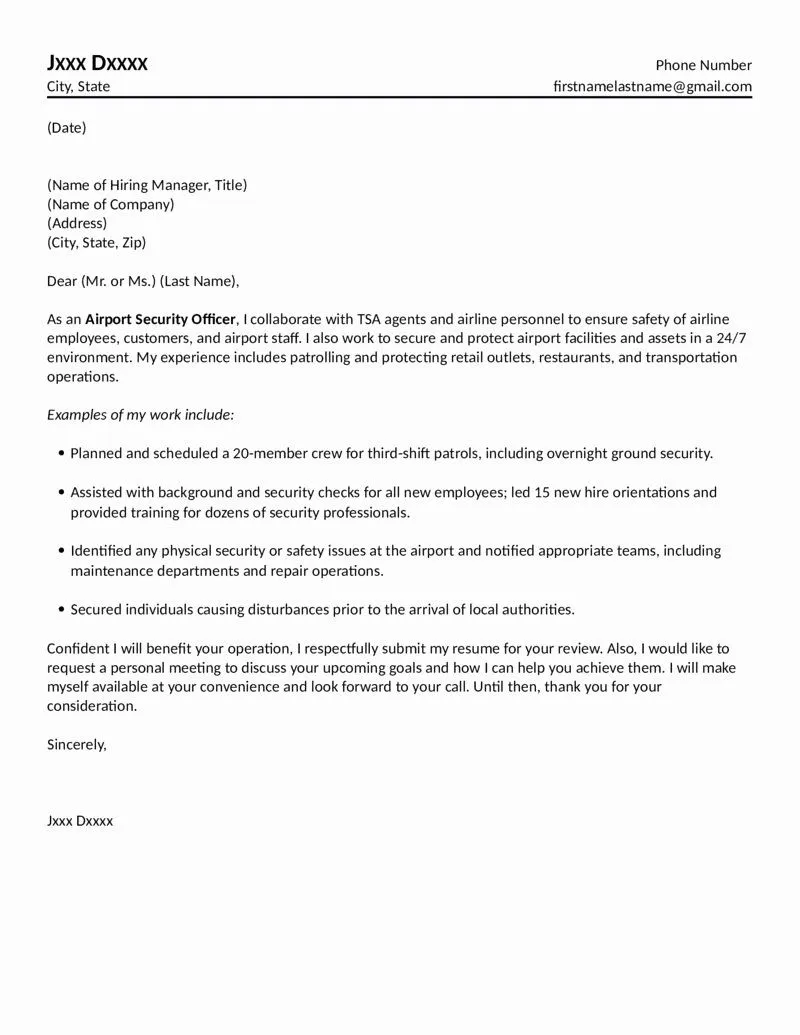
The formatting and layout of your security cover letter are important. Use a professional font, such as Times New Roman or Arial, and maintain consistent formatting throughout the document. Use 1-inch margins and single-space your text. Break up your text into short, easy-to-read paragraphs. Use bullet points to highlight key skills or accomplishments. Proofread your letter carefully for grammar, spelling, and punctuation errors. Ensure the letter is well-organized and visually appealing. Consider using a template, but make sure the template is easy to customize and fits your information.
Writing a Strong Opening Paragraph
The opening paragraph of your security cover letter is your first chance to capture the hiring manager’s attention. Start with a strong opening statement that immediately expresses your interest in the position and the company. Mention the specific security role you are applying for and where you saw the job posting. Briefly state your qualifications and why you are a good fit for the role. Tailor the opening to the specific job description, referencing any particular requirements or aspects of the role that appeal to you. The goal is to grab the reader’s attention and encourage them to continue reading. A strong opening will set the tone for the rest of your letter and make a positive first impression.
Creating a Powerful Middle Section
The middle section is where you provide the details about your skills, experience, and qualifications. This is your opportunity to demonstrate why you are the ideal candidate for the role. Refer to the job description and highlight the skills and experience that are most relevant. Provide specific examples of how you have applied your skills in previous roles. Use the STAR method (Situation, Task, Action, Result) to structure your examples, which helps illustrate your accomplishments and the impact you made. Focus on the specific requirements of the job and tailor your examples accordingly. Explain what you did, how you did it, and the positive outcomes you achieved. The middle section is the meat of your cover letter. This is where you provide the crucial information that will either secure you an interview or have your application disregarded.
Concluding Your Cover Letter Effectively
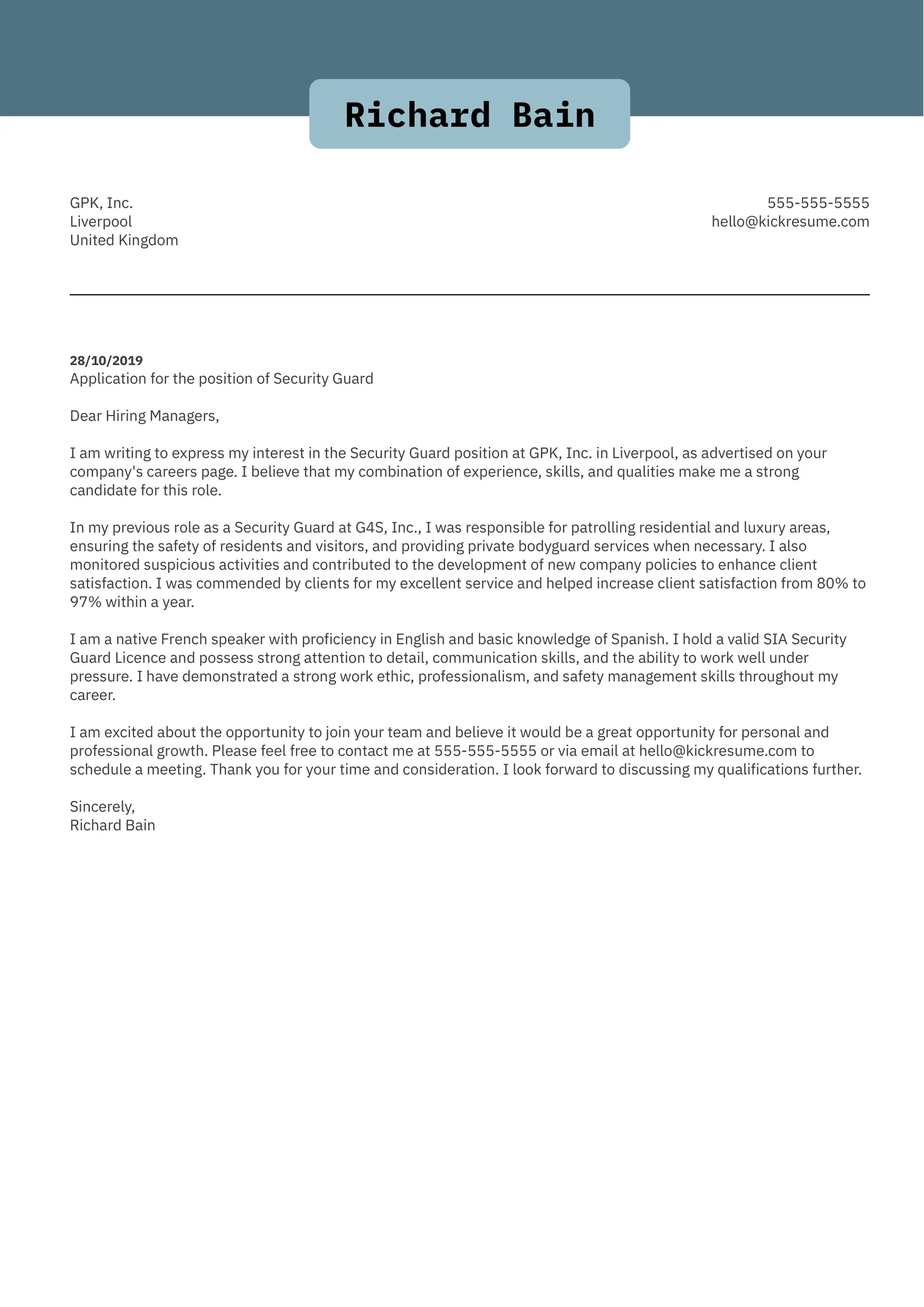
Your conclusion should summarize your interest in the position and reiterate your suitability for the role. Express your enthusiasm for the opportunity and thank the hiring manager for their time and consideration. State that you are available for an interview and provide your contact information. It is also appropriate to briefly mention any additional information that the reader may find helpful. Reiterate your enthusiasm for the role and leave a lasting impression on the hiring manager. A strong closing paragraph can leave a positive impression and increase your chances of moving to the next stage of the hiring process.
Including a Call to Action
Include a call to action to encourage the hiring manager to take the next step. Clearly state that you are available for an interview and provide your contact information. Express your enthusiasm for the opportunity and your eagerness to discuss your qualifications further. A strong call to action makes it clear that you are serious about the position. By including a clear call to action, you make it easier for the hiring manager to contact you and move forward with your application.
Proofreading and Editing Your Cover Letter
Proofreading and editing your cover letter is critical before submitting it. Errors in grammar, spelling, or punctuation can create a negative impression, and can make you look unprofessional. Proofread your letter carefully, and consider using a grammar checker to identify any mistakes. Have a friend or colleague review your cover letter for clarity and accuracy. Pay attention to the format, ensuring that it is consistent and easy to read. Check all the details, including the company name, job title, and contact information. Take your time and be thorough. A polished cover letter shows that you pay attention to detail and are committed to producing quality work. Proper proofreading can significantly improve your chances of getting an interview.
